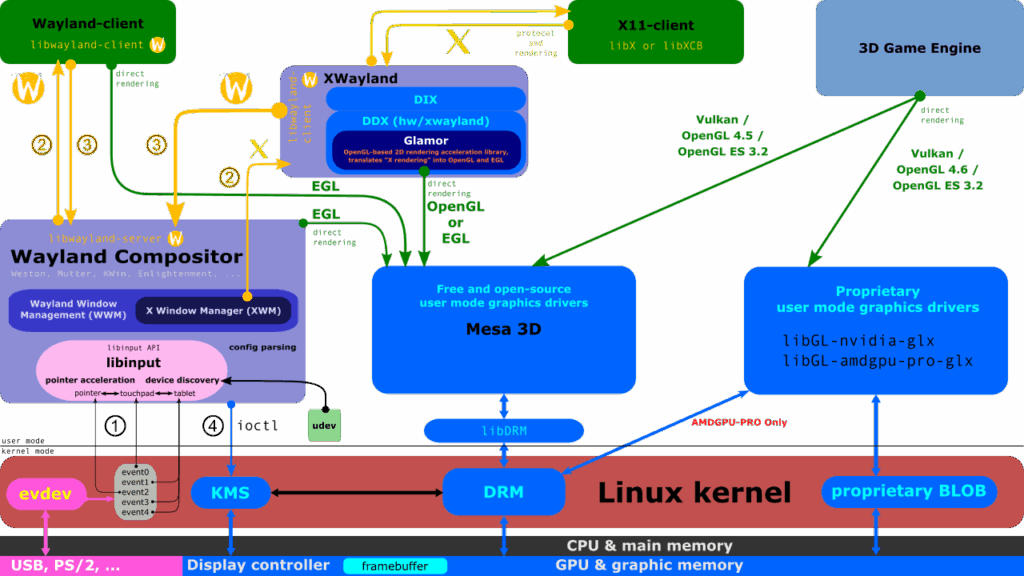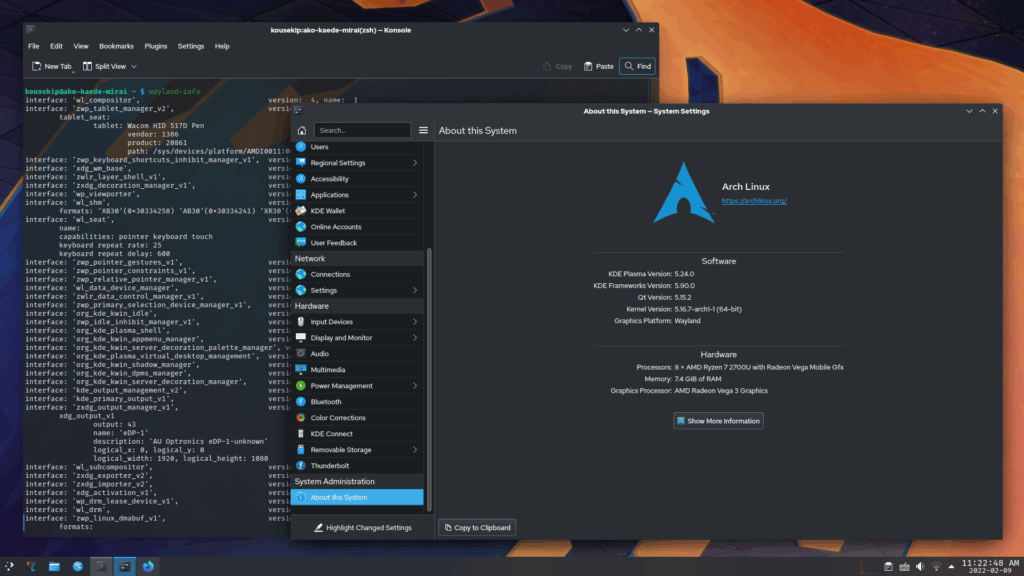For more than a decade, Wayland has emerged as the natural successor to the veteran X Window System (X.Org), offering a modern, simpler, and more secure design philosophy. This paradigm shift in Linux display servers is marking a turning point in the desktop graphical experience.
However, in the Linux ecosystem, there are other alternatives to X.Org and Wayland worth knowing, especially in specific environments like embedded systems, automotive platforms, or lightweight desktops. This article details and compares the main display servers currently in use: Wayland, X.Org, and notable mentions such as Mir and SurfaceFlinger (used in Android).
What is Wayland?
Wayland is a communication protocol that defines the interaction between a display server (compositor) and its clients (graphical applications). It not only defines the protocol but also provides a reference implementation called Weston. It was started by Kristian Høgsberg in 2008 and is maintained by freedesktop.org.
Wayland eliminates many of the legacy components of the X system by shifting the rendering responsibility to the client applications via modern APIs like OpenGL or Vulkan. This allows for a more efficient and direct architecture, where the compositor simply blends the already-rendered surfaces.
What is X.Org?
X.Org is the most widespread implementation of the X11 protocol, originally designed in the 1980s. It was built with a focus on network transparency and portability, but its centralized and complex architecture has caused performance, security, and maintenance issues in modern contexts.
Although extensions such as XRandR, XRender, and Composite have kept X.Org relatively up to date, its codebase still suffers from many historical limitations.
What about other display servers?
Mir: Developed by Canonical as an alternative to X and Wayland, Mir initially focused on Ubuntu Touch. Though controversial at first due to lack of compatibility, it now functions as a Wayland compositor and is mainly used in kiosks and embedded devices.
SurfaceFlinger: The display server used by Android. While not employed in traditional Linux distributions, it represents a mobile-oriented approach with architecture similar to Wayland.
Arcan: An experimental proposal that combines a display server, game engine, and development environment. Its emphasis on security and process isolation makes it an interesting alternative for researchers.
Comparison: Wayland vs X.Org vs Others
| Feature | Wayland | X.Org (X11) | Mir | SurfaceFlinger |
|---|---|---|---|---|
| Architecture | Client-server with compositor | Centralized server | Modular Wayland-based compositor | Android-specific client-server |
| Compositor | Integrated, mandatory | Optional, external (e.g., Compiz) | Has its own compositor | Part of Android system |
| Rendering | Client-side (direct to buffer) | Server or client-side | Client-side | Client-side |
| Network Transparency | Not native (requires external tools) | Designed for network use | Limited | None |
| Security | Per-window isolation | No isolation by default | Strong process isolation | Controlled by SELinux |
| Performance | Low latency, low overhead | Higher latency due to layering | Highly optimized for embedded use | High efficiency in mobile |
| Typical Use Cases | Modern desktop environments | Universal (legacy and modern) | Kiosks, IoT, embedded devices | Android mobile devices |
Advantages of Wayland
- Simplicity: Streamlined architecture without unnecessary legacy extensions.
- Security: Each window is isolated, preventing data leaks between apps.
- Efficiency: Lower CPU and memory usage.
- Low Latency: Smoother experience due to fewer intermediaries.
- Modularity: Enables innovation with new protocols and compositors.
Disadvantages or Challenges of Wayland
- Lack of support for legacy apps without XWayland.
- Limited network transparency, though solutions like VNC or RDP exist.
- Relies on graphical libraries: Does not provide a built-in rendering API.

XWayland: Bridging the Gap
XWayland enables X11 applications to run within a Wayland environment. It acts as an embedded X server that functions as a Wayland client, allowing unported software to work without modifications.
Adoption in Linux Distributions
Many Linux distributions now default to Wayland in environments like GNOME or KDE Plasma:
- Fedora: A pioneer in using Wayland by default since Fedora 25.
- Ubuntu: Enabled Wayland by default in GNOME since version 21.04.
- Debian: Uses Wayland by default in GNOME since version 10 (Buster).
- KDE Plasma 6: Uses Wayland by default since 2024.
Weston and wlroots
Weston is the reference implementation of a Wayland compositor, ideal for testing and embedded environments. On the other hand, wlroots provides a modular base to build custom compositors, used in projects like Sway (tiling), Hyprland (dynamic with effects), and labwc (Openbox-like stacking).
Conclusion
Wayland is not merely an evolution of X—it is a complete reimagining. While it still coexists with X.Org thanks to tools like XWayland, its modern architecture, built-in security, and superior performance position it as the undisputed future of graphical environments in Linux.
Nevertheless, alternatives like Mir, SurfaceFlinger, or Arcan show that the landscape of display servers in Linux remains dynamic and diverse. For users and developers alike, understanding these options and their strengths enables better-informed decisions, whether for traditional desktops, embedded systems, or mobile platforms.

